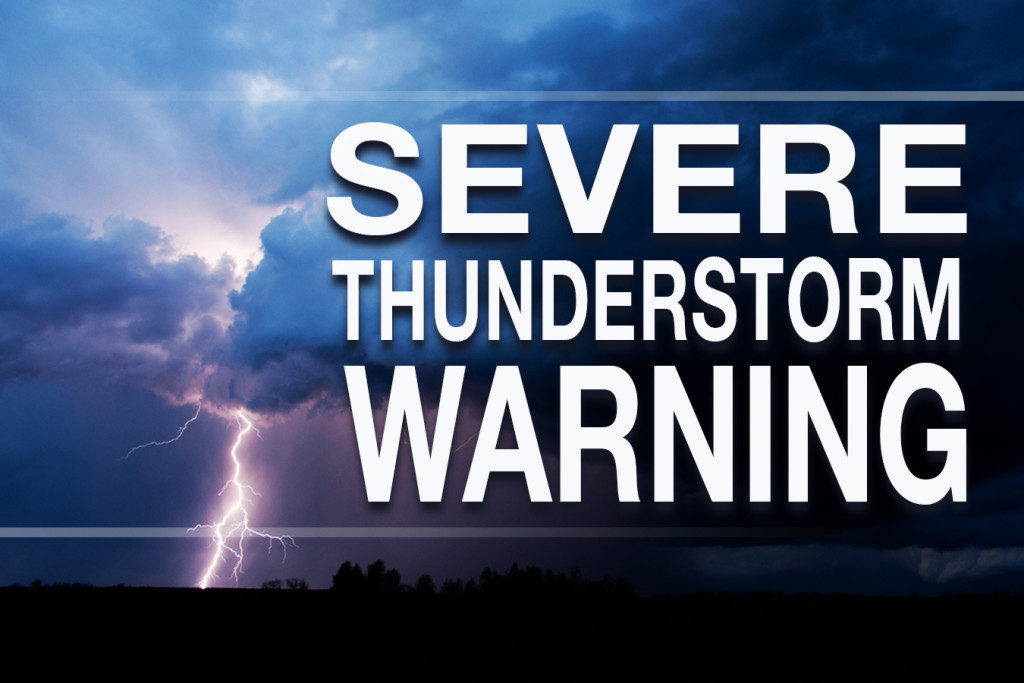Understanding Severe Thunderstorm Warnings: What You Need to Know

Severe thunderstorms can be a dangerous weather phenomenon, capable of producing damaging winds, large hail, and even tornadoes. When the National Weather Service (NWS) issues a severe thunderstorm warning, it's crucial to understand what it means and how to respond. This article will guide you through the essentials of severe thunderstorm warnings, how they differ from watches, and what actions you should take to stay safe.
What is a Severe Thunderstorm Warning?
A severe thunderstorm warning is an alert issued by the National Weather Service when a thunderstorm is imminent or already occurring and has the potential to cause serious damage. The warning is typically based on radar data or reports from trained storm spotters that indicate the storm is producing, or is capable of producing, winds of 58 mph (93 km/h) or higher, hail of one inch in diameter or larger, or a tornado.
The warning is generally issued for a specific area and time frame, often covering portions of one or more counties for 30 to 60 minutes. When a severe thunderstorm warning is issued for your location, it's a clear signal that you should take immediate action to protect yourself and your property.
How Does a Severe Thunderstorm Warning Differ from a Watch?
It's important to understand the difference between a severe thunderstorm warning and a severe thunderstorm watch:
- Severe Thunderstorm Watch: A watch means that conditions are favorable for the development of severe thunderstorms in and around the watch area. It does not mean that severe weather is currently happening, but that it could develop. You should stay informed and be prepared to take action if the weather situation escalates.
- Severe Thunderstorm Warning: A warning, on the other hand, means that severe weather is either occurring or is imminent in the warning area. This is a more urgent alert, indicating that you need to take immediate action to stay safe.
What to Do When a Severe Thunderstorm Warning is Issued
When a severe thunderstorm warning is issued for your area, follow these steps to ensure your safety:
1. Seek Shelter Immediately
- Move indoors if you're outside. The safest place to be during a severe thunderstorm is inside a sturdy building. Avoid mobile homes, which can be easily overturned by strong winds.
- If you're already indoors, stay away from windows, doors, and exterior walls. Consider moving to a basement or an interior room on the lowest floor of your home.
2. Avoid Electrical Appliances and Plumbing
- Lightning can strike even when you're indoors. Stay away from electrical appliances, and avoid using plumbing (such as taking a shower or washing dishes) during the storm, as lightning can travel through electrical wiring and water pipes.
3. Stay Informed
- Keep a battery-powered weather radio or a mobile device with weather alerts handy to stay updated on the storm's progress. The warning may be extended, or a tornado warning could be issued, so it's important to stay informed.
4. Protect Your Property
- If time permits, secure outdoor objects that could be blown around by strong winds, such as patio furniture, trash cans, and bicycles. Close windows and shutters to prevent damage from hail or debris.
5. Be Prepared for Power Outages
- Severe thunderstorms can knock out power. Keep flashlights, batteries, and a fully charged mobile phone on hand. Avoid using candles, which can pose a fire hazard during power outages.
6. Avoid Driving
- If you're driving when a severe thunderstorm warning is issued, try to pull over to a safe location. Stay in your vehicle and avoid parking under trees or near power lines, as these can fall during strong winds.
After the Storm: Assessing Damage and Staying Safe
Once the storm has passed, it’s important to remain cautious:
- Wait for the All-Clear: Do not assume that the storm is over once the immediate danger has passed. Additional storms may follow, and it's important to wait for an official all-clear from the National Weather Service.
- Check for Damage: Inspect your property for damage, but be careful of downed power lines, broken glass, and other hazards. If you suspect structural damage to your home, leave the building and call a professional to assess the situation.
- Avoid Flooded Areas: Flash flooding is often associated with severe thunderstorms. Avoid driving or walking through floodwaters, as they can be deeper and more dangerous than they appear.
Conclusion
A severe thunderstorm warning is a critical alert that should never be ignored. Understanding what it means and how to respond can protect you, your loved ones, and your property from potentially life-threatening conditions. Always take these warnings seriously, seek shelter immediately, and stay informed until the storm has fully passed.
By following these guidelines, you can ensure that you're prepared for severe weather events and can act quickly to stay safe. Severe thunderstorms are unpredictable and can escalate quickly, so being informed and ready to respond is your best defense.






